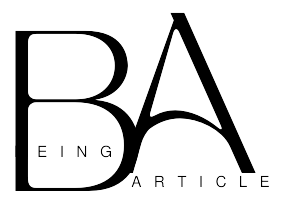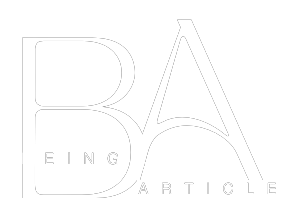Article 8 Spiral? | Spiral from the book of saw article 8
“Article 8” refers to a set of rules or a code of conduct that police officers must follow in order to maintain their integrity and the public’s trust. It is mentioned as a key factor in determining the motivations behind the Jigsaw copycat killer’s actions in the film.
It should be noted, however, that “Article 8” is a fictitious construct created for the film and does not correspond to any real-world law or regulation governing police conduct. The movie’s themes and messages should be viewed in the context of its fictional narrative and not as a reflection of actual police practices or policies.
Circular Article 8
Article 8 Spiral is a legal framework used to analyze the cases that fall within Article 8 of the European Convention on Human Rights (ECHR). In this article, we’ll discuss the importance of this Article 8 Spiral, its different stages, and how it is utilized in the legal process.
The Significance of Article 8 of the ECHR
The Article 8 provision of ECHR provides the right to respect for family and personal life, home, and correspondence. This article is an essential part of ECHR and is vital to safeguarding the individual’s liberty and ensuring privacy rights.
The Article 8 Spiral
Article 8 Spiral is a framework for analyzing instances involving Article 8 of the ECHR. The framework is comprised of various steps that are described as the following:
Stage 1 – Does there appear to be an interference in Article 8 rights?
The first step is determining whether there was an interference in exercising Article 8 rights. Interference can take many types, including surveillance, restrictions on movement, or invading privacy. If there’s been some interference, the investigation goes to the next stage.
Stage 2 – Is the interfering legal?
The next step is to determine whether the intervention is legal. The interference is lawful if it is authorized by law and necessary to achieve a legitimate purpose stipulated by Article 8(2) of the ECHR. These goals include the security of the nation as well as public safety and protecting the rights and freedoms of others. When the interference appears to be legal, then the investigation moves to the third stage.
Stage Is interference essential in a democratic society?
The third step is to determine whether interference is needed in a democracy. This involves balancing the competing interests at stake. The courts will take into consideration elements like the nature and the extent that the intrusion is taking place, as well as the importance of the legitimate purpose being pursued, as well as the availability of less intrusive measures. If interference becomes needed in a democracy, the investigation moves to step.
The 4th stage – is the interfering proportional?
The fourth step is to determine how much interference is proportional. This requires another evaluation of the competing interests against one other. The court will determine if the interference is a reasonable balance between competing interests and if it is reasonable for the legitimate purpose to be pursued.
How the Article 8 Spiral is Used in Legal Practice?
Article 8 Spiral is used extensively in the legal field, especially in cases that involve data privacy or surveillance. The framework provides a logical way of analyzing cases making sure that all relevant aspects are considered and evaluated against one another.
The framework can be particularly helpful when dealing with complex factual circumstances and conflicting interests. It permits the judges to look at the different aspects involved systematically and come to a rational and balanced conclusion.
In the end, it is said that it is important to note that Article 8 Spiral is a legal framework to look at cases that involve Article 8 of the ECHR. The framework is comprised of several phases, each of which involves the determination of whether there is a violation of Article 8 rights, whether the violation is legal and if it is needed for democracy, and if it is reasonable. Article 8 Spiral Article 8 Spiral is an important tool for lawyers that provides a systematic way of analyzing cases and making sure that all relevant aspects are taken into consideration.
Importance of Understanding Article 8
Article 8 protections are of significant importance to people whose privacy, family life, and freedom are at risk of being damaged by the State or by other actors. The right to respect privacy and family life could come into play in a wide variety of circumstances, including cases of surveillance and protection of data as well as family law, as well as healthcare. Therefore, it is vital to comprehend the meaning covered by Article 8 and the circumstances in which it may be legally restricted.
Understanding The European Convention On Human Rights
History of the ECHR
The European Convention on Human Rights was adopted in 1950 by the newly created Council of Europe. The Convention is designed to safeguard the fundamental rights and freedoms of the human person throughout Europe and beyond. The Convention is enforced through the European Court of Human Rights (ECtHR), which is a court that hears instances brought by groups or individuals who claim violations of their rights by authorities of the State.
Current Signatories to the ECHR
In 2021, 47 countries signed the ECHR and including the 27 members of the European Union. All signatories to the Convention have pledged to protect and respect those fundamental rights and liberties enshrined in the document. These include freedom of life as well as freedom of expression, and the right to an impartial trial.
An Overview Of Article 8: The Right To Respect For Private And Family Life
Text of Article 8
Article 8 in the ECHR stipulates: “Everyone has the right to respect for his private and family life, his home and his correspondence.” This protects against unjustified or illegal interference in one’s privacy or family or home.
Scope of Article 8
The coverage scope of Article 8 is broad; it covers a variety of privacy issues as well as family life and autonomy for individuals. The ECtHR has defined Article 8 to include the right to form and maintain relationships with other people and the right to sexual autonomy, and the right to regulate your data. Article 8 also can potentially protect specific aspects of business and employment operations.
The Scope And Limitations Of Article 8 Protections
Article 8 protections cover a variety of subjects that include the rights to get married and start an extended family as well as the right to maintain relationships with relatives and the right to psychological and physical integrity, as well as your right to be in control within one’s private and home life. This can also include concerns regarding immigration, data protection as well as reproductive rights.
Limitations on Article 8 Protections
Although Article 8 provides a wide range of protections for family and private life, These protections aren’t complete. The ECtHR recognizes that in certain situations, the limitations of Article 8 can be justified, like when a violation is required to safeguard the security of the nation, public security, as well as the rights or liberties of others. But, any restriction to Article 8 must be proportionate and essential in an emancipated society.
Case Examples of Article 8 in Action
Article 8 in the European Convention on Human Rights guarantees the right to respect for family and private life, home, and correspondence. Here are a few illustrations of ways Article 8 has been applied in court proceedings:
Landmark Case Examples
A famous case to test the limits that Article 8 can be used to test the limits of Article 8 is the Pretty v. United Kingdom case. This case concerned a terminally sick woman who sought that her partner help her in taking her own life. In the case, the European Court of Human Rights declared it was not a violation of Article 8 because Article 8 does not encompass the right to die via assisted suicide. This case is significant in the understanding of Article 8.
Another important case is Von Hannover, the case of Von Hannover v Germany. The case concerned the privacy rights of Princess Caroline regarding photos of her that were taken by the media. In this instance, the court ruled that Princess Caroline was entitled to privacy in her private and public lives because she did not give her permission to release her pictures.
Controversial Cases and Outcomes
One case that sparked debate was the deportation of Abu Qatada from the UK to Jordan. In the case, the European Court of Human Rights decided the position that Article 8 does not always guarantee protection against deportation in the case that it results in the separation of families. The court decided that the security of the nation’s concerns in this instance overcame Qatada’s right to live with her family.
Another controversial case is DNA retention. The case was S and Marper v UK. The court decided that the United Kingdom’s policy of removing DNA from all those who are arrested but not found guilty violates Article 8 rights.
Balance Article 8 Rights And Other Rights And Interests

Although Article 8 is a fundamental human right, it’s not an absolute right. Here are a few examples of ways it could conflict with other priorities:
Conflicts with other Human Rights
Article 8 rights could clash with other rights of humans, such as freedom of speech and the right to an impartial trial. In these instances, the court has to balance the different rights and interests.
Public Interest Considerations
Considerations of public interest are important when it comes to the balance of Article 8 rights with other priorities. For instance, in matters that concern national security, the public interest in security could outweigh the privacy rights of an individual.
The Role Of The European Court Of Human Rights In Enforcing Article 8
The European Court of Human Rights is an essential part of interpreting and enforcing Article 8. This is what you should be aware of about the court’s function:
How the Court Interprets Article 8
It applies Article 8 broadly to encompass the rights to privacy as well as family life, as well as the right to personal autonomy. However, the court acknowledges that there are instances in which States could limit these rights.
Enforcement Mechanisms and Procedures
Individuals can bring a complaint before the European Court of Human Rights if they believe they have been denied their Article 8 rights have been violated. The court is empowered to declare an act of a State as violating Article 8 and to require the State to offer the remedy or compensation.
Conclusion And Implications For Future Interpretations Of Article 8
Article 8, as well as its implementation, has changed over time. Here are some recent trends and possible future developments:
Current Trends in Article 8 Interpretation
The court has placed more weight on the significance of autonomy for individuals and the ability to choose how one life. In addition, the court has acknowledged the right to privacy in specific instances.
Potential Future Developments
It will be the court’s job to consider the different rights in Article 8 with other rights and public interest considerations. As technology improves, there may be new challenges in the context of Article 8 rights, such as concerns with privacy and social media. The court must be ready to deal with these challenges. In conclusion, Article 8 Spiral is a complicated and constantly evolving field of law governing human rights.
As we’ve seen, the right to privacy and respect for private and family life protects against unwelcome interference from the State or other parties. But, it is subject to significant limitations and must be considered with other competing interests. As we advance, judges and policymakers must be aware of the impact of their decisions on the rights of individual citizens and society in general.



















